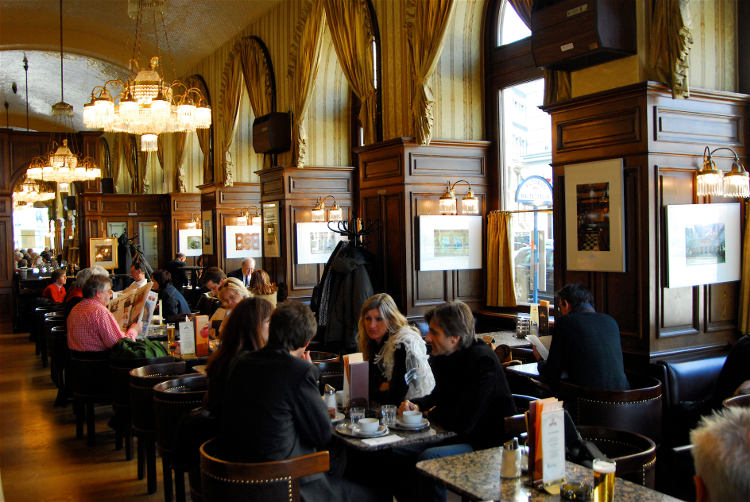
Rococo and boho, trendy and touristy, grand and grungy – today Vienna's coffee houses are as diverse as the Viennese themselves. But brewing under the surface of each and every one is the belief that the Kaffehaus is an extension of society; a place where locals can linger over a single cup unhurried, trade gossip, read, write, dream, play games, put the world to rights, laugh and love – all while drinking in the warm, nostalgic glow of Gemütlichkeit, the Austrian quality of cosiness. Joining them is your golden ticket to the city's soul.
Like many a good fairy tale, Vienna's coffee house culture began with some magic beans. Back in 1683, when the Ottoman invaders beat a hasty retreat from the Polish-Hapsburg allies at the Battle of Vienna, they left behind sacks of beans at the city gates as they scarpered. At first these mystery beans were dismissed as camel feed or dung, but Jerzy Franciszek Kulczycki, a military officer who had spent time in captivity in Turkey, knew they had struck gold. The coffee beans were roasted, sugar and milk were added. The Hapsburgs went mad for it. The rest, as they say, is history.
From those tiny beans grew an entire culture. In the 18th and 19th centuries, palatial coffee houses began to pop up all over the city, serving coffee and fanciful cakes to sweet-toothed Hapsburg emperors and the high society. Mozart and Beethoven gave public performances in 1788 at one of Vienna's oldest, Café Frauenhuber (cafefrauenhuber.at), still in business today. At the turn of the century, a stream of great thinkers, poets, philosophers, musicians and artists poured into the city's grandest Kaffehäuser.
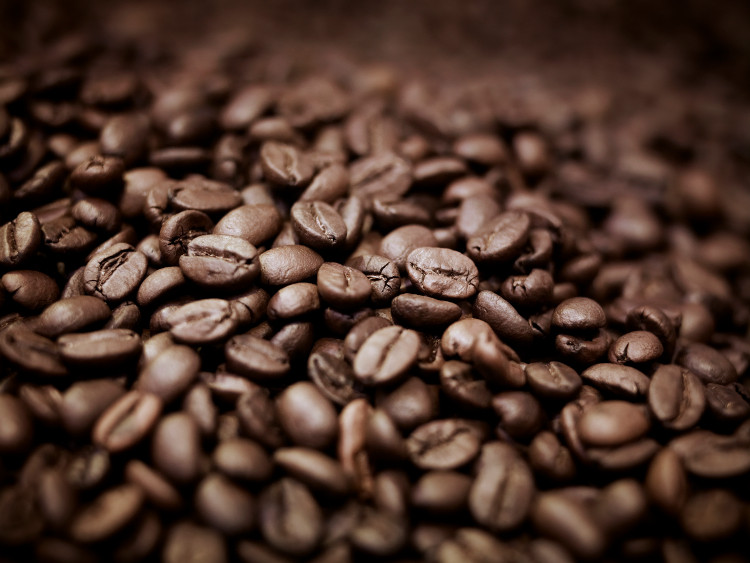
Every local has a soft spot for a particular coffee house, and you can bet that one of them is a loveable, time-worn, dog-eared number – perhaps a student dive or a vision of faded grandeur, where the walls are still poster-plastered and nicotine stained, the velvet armchairs worn thin and deep by centuries of fidgeting bums, and the light dim enough to cast a nostalgic glow on the dangerous liaisons.
A short toddle from the MuseumsQuartier in the 6th district, on bar-lined Gumpendorfer Strasse, Café Sperl has kept plenty of old-school swagger, with lofty ceilings, a billiard table and private booths for a chinwag or a game of cards. Franz Lehár and Sigmund Freud were both regulars.
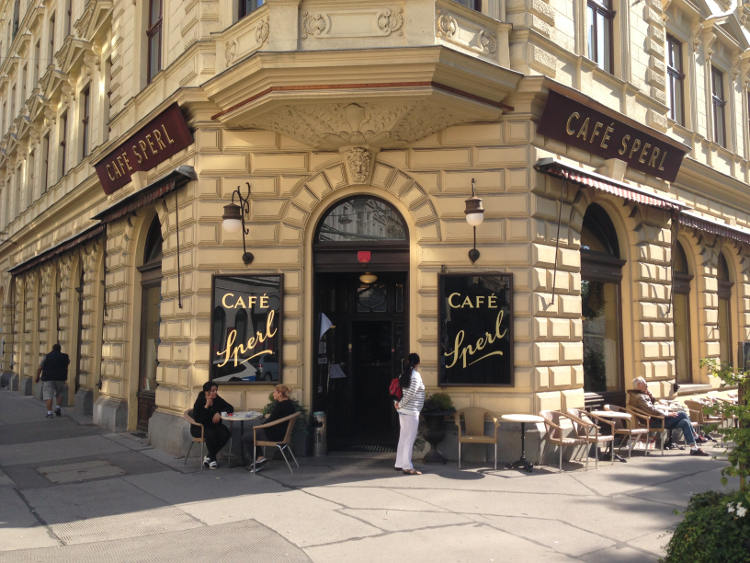
Just as authentic is the moody and wonderfully shabby Café Leopold Hawelka in the Innere Stadt, its walls lined with old pictures, its heart still stuck in the 1930s and its hall of fame featuring artists like Warhol and Hundertwasser. Cocoon yourself here on a winter's day for coffee with Buchteln, light, sweet dumplings served with plum jam.
Further off the beaten track is Sperlhof (Grosse Sperlgasse 41), near Taborstrasse U-Bahn in Leopoldstadt, which pings you back to the 1920s with its poster-clad, wood-panelled interior. There are no airs and graces – just hearty food, a convivial mood and 900 board games, piled up to the rafters, to pass the time.
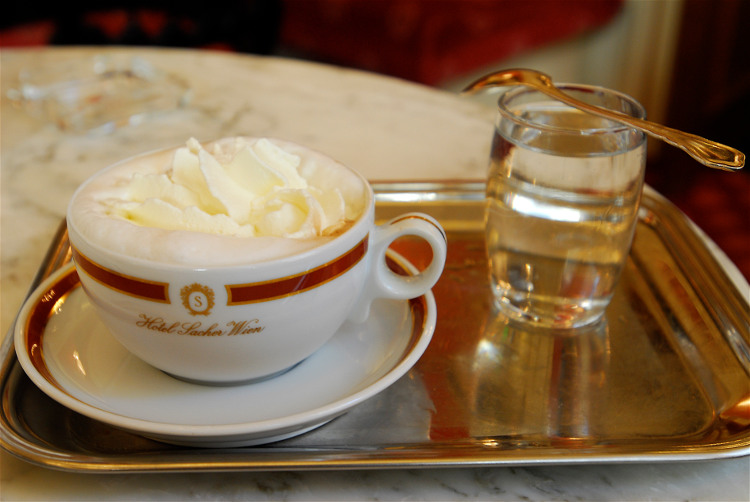
Vienna is bejewelled with coffee houses as opulent as any palace. Take Café Central, for instance, with its marble polished to a sheen, black-vested waiters and pianist bashing out tunes from 5pm. Sigmund Freud and poet Peter Altenberg once sipped coffee below this high vaulted ceiling, while Trotsky came here to plot his next move – in chess and the Russian Revolution. Admittedly it is firmly on the tourist trail, but you can't beat it for decadence and divine cakes like the chocolate-truffle Altenbergtorte.
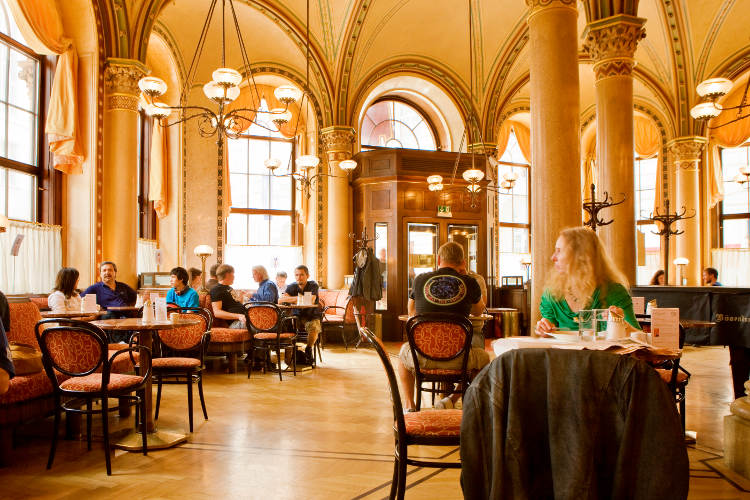
Just as swanky is chandelier-lit Café Sacher, which arrived on the scene in 1832. There's only one thing to order here: Sacher Torte, a rich iced chocolate cake with a layer of tangy apricot jam, created for Prince Wenzel von Metternich, but named after the baker, not the prince.
A short amble south brings you to the exquisite rococo salon of Demel, a mini temple of three o' clock indulgence, which once catered for imperial tastes. Even Empress Sisi, famous for her wasp-like, 19-inch waist, was partial to the sweets here. Among the cream-filled, chocolate-glazed, fruit-topped confections, one torte stands out – the Anna Demel Torte, a chocolate-nougat calorie bomb.
After a crisp autumn walk through the Stadtpark or an exhibition morning at the MAK (www.mak.at), step across to Prückel, on the Ringstrasse boulevard, which is a real blast of the 1950s with its intimate booths and high ceilings. Come for afternoon apple strudel that flakes just so, or linger into the evening – a pianist plays from 7pm to 10pm every Monday, Wednesday and Friday.
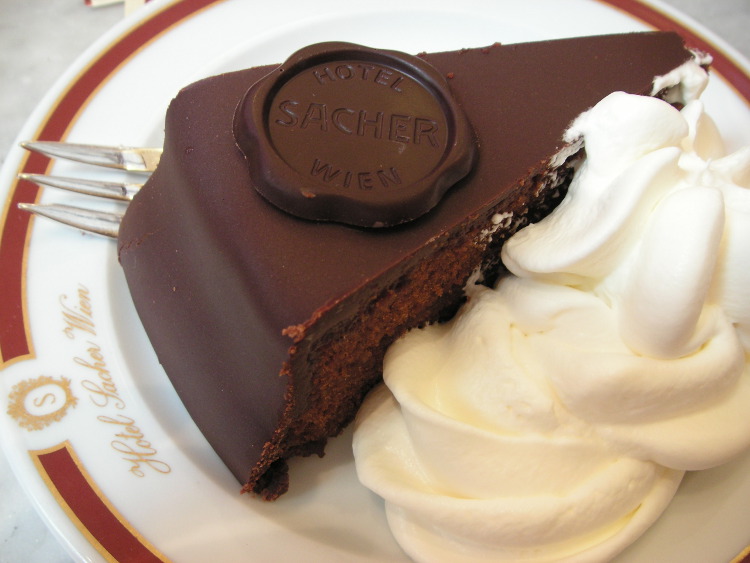
Vienna has always been a city that successfully walks the tightrope between past and present, so cue a wave of cafes that are ushering in a new era for the Kaffehaus. One such place is retro-flavoured Espresso (espresso-wien.at), tucked down Burggasse in the design-focused 7th district, Neubau. Time warping you back to the 1950s with its formica tables and vintage bar, it's a totally chilled spot for a strong shot of Italian espresso, a gourmet breakfast, organic day special or a slice of homemade cake.
A drop of cool in the university district of Alsergrund, CaffèCouture (www.caffecouture.com) is the brainchild of barista Georg Branny. His baby is a La Marzocco Strada EP espresso machine, which he uses to whip up creative coffees in minimalist, art-slung surrounds.
Less about the coffee, more about the cake, Fett+Zucker (www.fettundzucker.at) offers a fat and sugar kick after a morning's mooch around the Karmelitermarkt. Comic strip art on the walls and a mishmash of vintage furniture create a nicely laid-back vibe.
Breaking away from the classic coffee house mould back in the Innere Stadt is Cafe Neko (www.cafeneko.at), Vienna's first Japanese cat cafe, where coffee comes with a feline friend to stroke.
Where can you get a coffee at a blurry-eyed hour? Well, it just so happens that a number of Vienna's coffee houses morph into bars by night. In the Innere Stadt, you could try dark, bohemian Kaffee Alt Wien (Bäckerstrasse 9), a student haunt haloed in a fog of smoke, which is open to 2am and does a mighty fine goulash, should you get peckish.
Opposite the Naschmarkt, Cafe Drechsler is another upbeat choice, often with DJs on the deck as day spills into night. The slick, minimalist interior bears the hallmark of Sir Terence Conran.
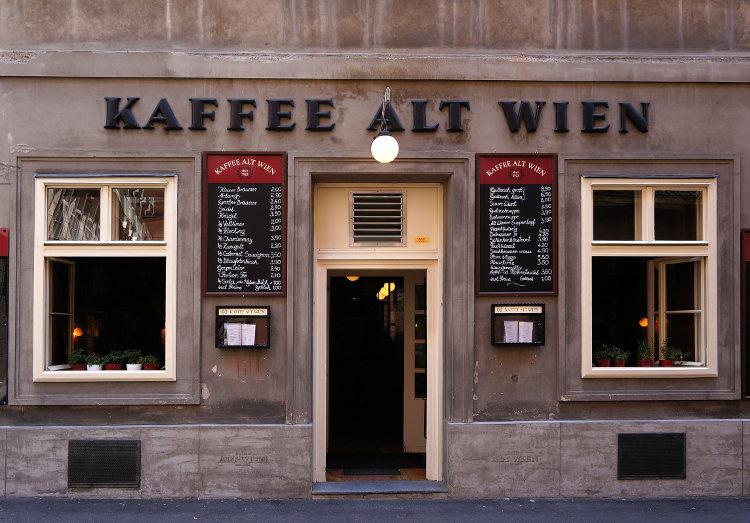
Kerry Christiani is the co-author of the Vienna guidebook and she also authors a number of Lonely Planet's other European titles. Follow her travels @kerrychristiani